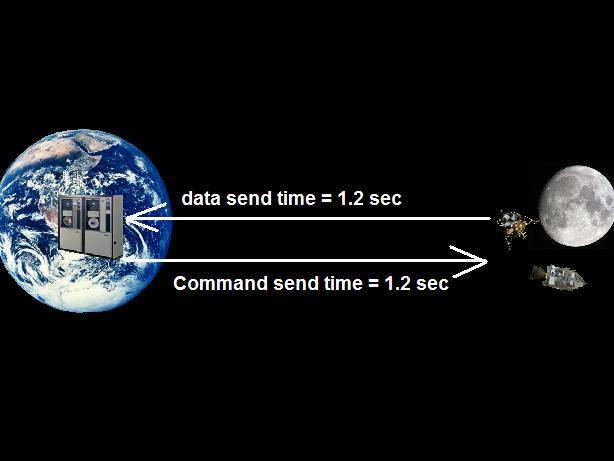
But there was something that the earth computers could not do better that the onboard computer of Apollo: Guiding the lunar module.
Indeed guiding the lunar lodule was consisting in a loop acquiring the current measures (radar position, acceleration, angles), computation of commands according to these measures, and applying these commands to the guiding system; however, so that the computers based on earth could make the computation from the current measures, these ones had to be transmitted from moon to earth, which was taking, given the distance, around 1.25 seconds: once the computation was made, the computers had then to transmit the results to the guiding system, which was taking a new 1.25 seconds; so finally, between the moment that the measures were transmitted and the moment the commands were coming back, there was 1.25+1.25=2.5 seconds; even if we suppose that the computers on earth were able to do the computations instantly, if the onboard computer of Apollo was able to do the computation in less than 2 seconds, it was doing better than the earth computers, in spite of their greater power; moreover, it would have been hazardous to proceed that way, for, in case of transmission loss, the module would have been no more guided.
|